Paul Henry RHA (1877-1958) Connemara Cottages Oil on canvas, 45 x 50cm (17� x 19�'') Signed � Arguably one of the most recognisable Irish artists, Paul Henry�s landscapes enrich the walls of museums and private collectors alike. His formulaic use of thatched cottages offset by stoic mountains and billowing cumulus clouds runs the risk of becoming repetitive and stale, yet each Henry work defies the odds, bringing a new perspective and charm. Beginning his career in London as an illustrator, it wasn�t until 1910 that Paul Henry became infatuated with western Ireland. Initially, Henry went on a short holiday to Achill with his wife, Grace, but they ended up staying for several months before moving there in 1912. Following on from his London subject matter and greatly influenced by the works of Jean Francois Millet, the next seven years or so were predominantly involved with figure studies as Henry strove to capture the unyielding efforts of the locals as they coaxed a living from the harsh environment. In doing so, Henry�s appreciation of the land was nurtured and, from c.1920 onwards, the inhabitants were erased to leave only the landscapes, constantly governed by an ever-evolving sky. This switch to landscape painting coincided with the Henrys� move to Dublin and one cannot help but wonder if this was his way of submerging himself in a world to which he no longer belonged. Unlike many of the figure pieces, which tend towards a darker, grittier colour palette, Henry�s landscapes are often quite light in tone. They show the west at its absolute best, omitting the rain and wind that usually terrorise disappointed tourists. Whilst these romanticised views show the artist�s yearning for the idyll which he remembered, they also fit into the depiction of the new, independent Ireland that the government of the 1920s wished to portray. Leading up to and following the break from Great Britain, Ireland needed to create its own, separate identity and thus rural images and lifestyles were thrown into focus. Indeed, Henry�s works soon became the poster child of Irish tourism and, looking at the current work, it isn�t hard to see why. �Connemara Cottages� falls onto the viewer like a blanket, wrapping them in tranquillity. The whitewashed cottages gleam in the sunlight and the lush greenery almost makes us forget the bogland that looms in the middle ground. The mountain beyond rises like a protective wall, promising safety to this isolated community. The vista offers a break from busy city life and evokes an Ireland unravaged by time and immortal in its serenity. Helena Carlyle, August 2021 Paul Henry RHA (1877-1958) Connemara Cottages Oil on canvas, 45 x 50cm (17� x 19�'') Signed � Arguably one of the most recognisable Irish artists, Paul Henry�s landscapes enrich the walls of museums and private collectors alike. His formulaic use of thatched cottages offset by stoic mountains and billowing cumulus clouds runs the risk of becoming repetitive and stale, yet each Henry work defies the odds, bringing a new perspective and charm. Beginning his career in London as an illustrator, it wasn�t until 1910 that Paul Henry became infatuated with western Ireland. Initially, Henry went on a short holiday to Achill with his wife, Grace, but they ended up staying for several months before moving there in 1912. Following on from his London subject matter and greatly influenced by the works of Jean Francois Millet, the next seven years or so were predominantly involved with figure studies as Henry strove to capture the unyielding efforts of the locals as they coaxed a living from the harsh environment. In doing so, Henry�s appreciation of the land was nurtured and, from c.1920 onwards, the inhabitants were erased to leave only the landscapes, constantly governed by an ever-evolving sky. This switch to landscape painting coincided with the Henrys� move to Dublin and one cannot help but wonder if this was his way of submerging himself in a world to which h
Paul Henry RHA (1877-1958) Connemara Cottages Oil on canvas, 45 x 50cm (17� x 19�'') Signed � Arguably one of the most recognisable Irish artists, Paul Henry�s landscapes enrich the walls of museums and private collectors alike. His formulaic use of thatched cottages offset by stoic mountains and billowing cumulus clouds runs the risk of becoming repetitive and stale, yet each Henry work defies the odds, bringing a new perspective and charm. Beginning his career in London as an illustrator, it wasn�t until 1910 that Paul Henry became infatuated with western Ireland. Initially, Henry went on a short holiday to Achill with his wife, Grace, but they ended up staying for several months before moving there in 1912. Following on from his London subject matter and greatly influenced by the works of Jean Francois Millet, the next seven years or so were predominantly involved with figure studies as Henry strove to capture the unyielding efforts of the locals as they coaxed a living from the harsh environment. In doing so, Henry�s appreciation of the land was nurtured and, from c.1920 onwards, the inhabitants were erased to leave only the landscapes, constantly governed by an ever-evolving sky. This switch to landscape painting coincided with the Henrys� move to Dublin and one cannot help but wonder if this was his way of submerging himself in a world to which he no longer belonged. Unlike many of the figure pieces, which tend towards a darker, grittier colour palette, Henry�s landscapes are often quite light in tone. They show the west at its absolute best, omitting the rain and wind that usually terrorise disappointed tourists. Whilst these romanticised views show the artist�s yearning for the idyll which he remembered, they also fit into the depiction of the new, independent Ireland that the government of the 1920s wished to portray. Leading up to and following the break from Great Britain, Ireland needed to create its own, separate identity and thus rural images and lifestyles were thrown into focus. Indeed, Henry�s works soon became the poster child of Irish tourism and, looking at the current work, it isn�t hard to see why. �Connemara Cottages� falls onto the viewer like a blanket, wrapping them in tranquillity. The whitewashed cottages gleam in the sunlight and the lush greenery almost makes us forget the bogland that looms in the middle ground. The mountain beyond rises like a protective wall, promising safety to this isolated community. The vista offers a break from busy city life and evokes an Ireland unravaged by time and immortal in its serenity. Helena Carlyle, August 2021 Paul Henry RHA (1877-1958) Connemara Cottages Oil on canvas, 45 x 50cm (17� x 19�'') Signed � Arguably one of the most recognisable Irish artists, Paul Henry�s landscapes enrich the walls of museums and private collectors alike. His formulaic use of thatched cottages offset by stoic mountains and billowing cumulus clouds runs the risk of becoming repetitive and stale, yet each Henry work defies the odds, bringing a new perspective and charm. Beginning his career in London as an illustrator, it wasn�t until 1910 that Paul Henry became infatuated with western Ireland. Initially, Henry went on a short holiday to Achill with his wife, Grace, but they ended up staying for several months before moving there in 1912. Following on from his London subject matter and greatly influenced by the works of Jean Francois Millet, the next seven years or so were predominantly involved with figure studies as Henry strove to capture the unyielding efforts of the locals as they coaxed a living from the harsh environment. In doing so, Henry�s appreciation of the land was nurtured and, from c.1920 onwards, the inhabitants were erased to leave only the landscapes, constantly governed by an ever-evolving sky. This switch to landscape painting coincided with the Henrys� move to Dublin and one cannot help but wonder if this was his way of submerging himself in a world to which h
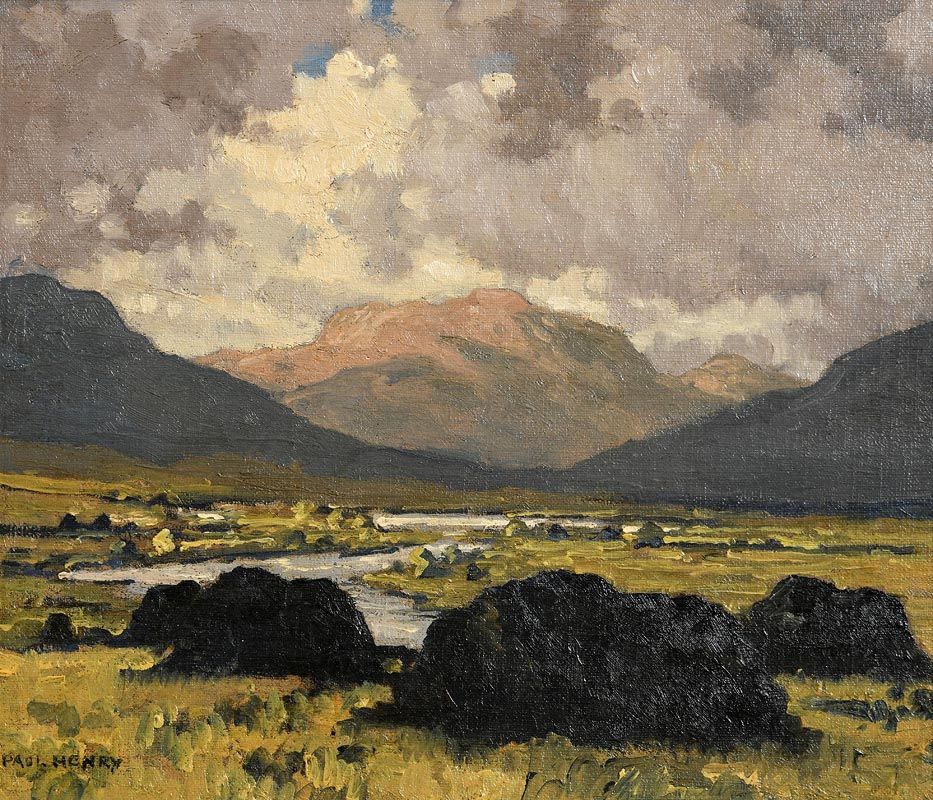

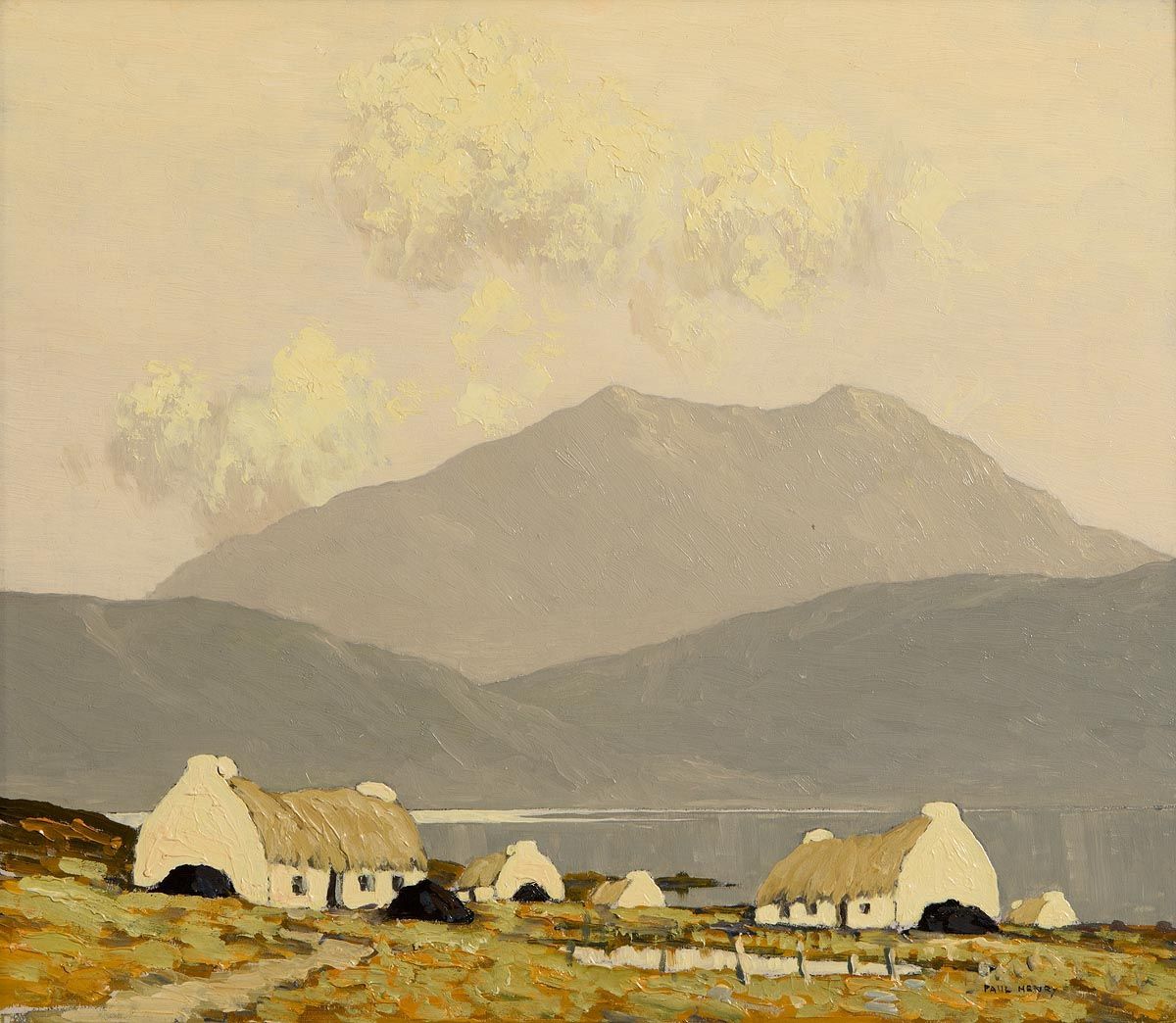

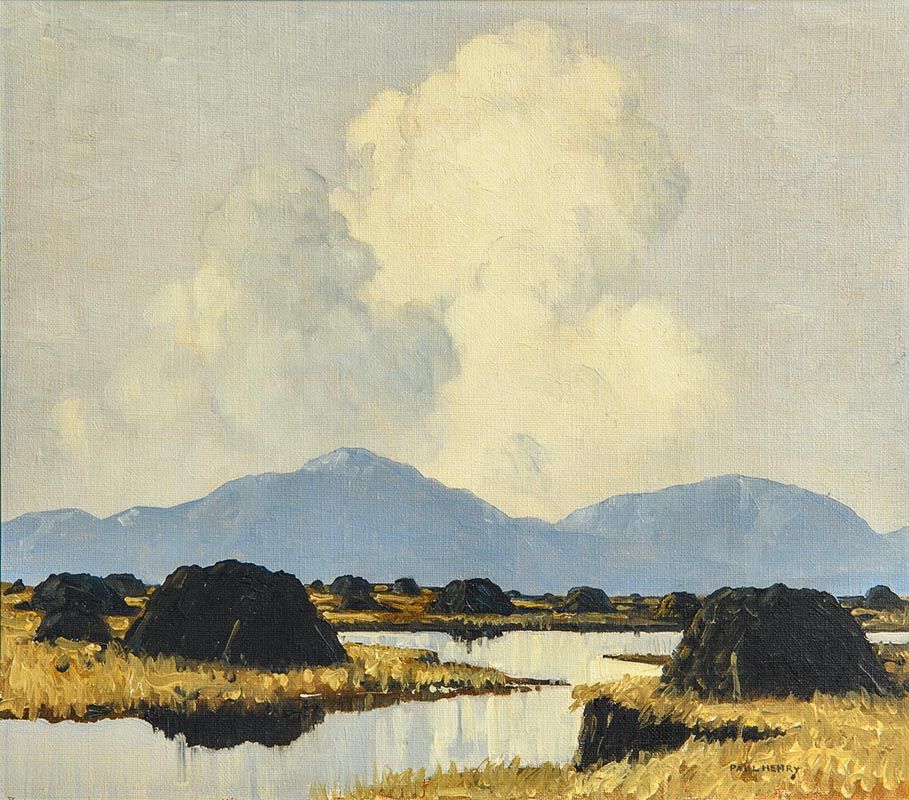
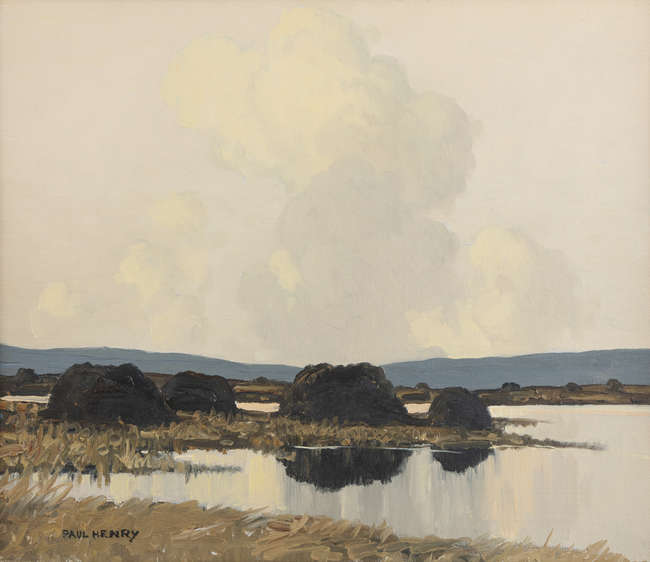
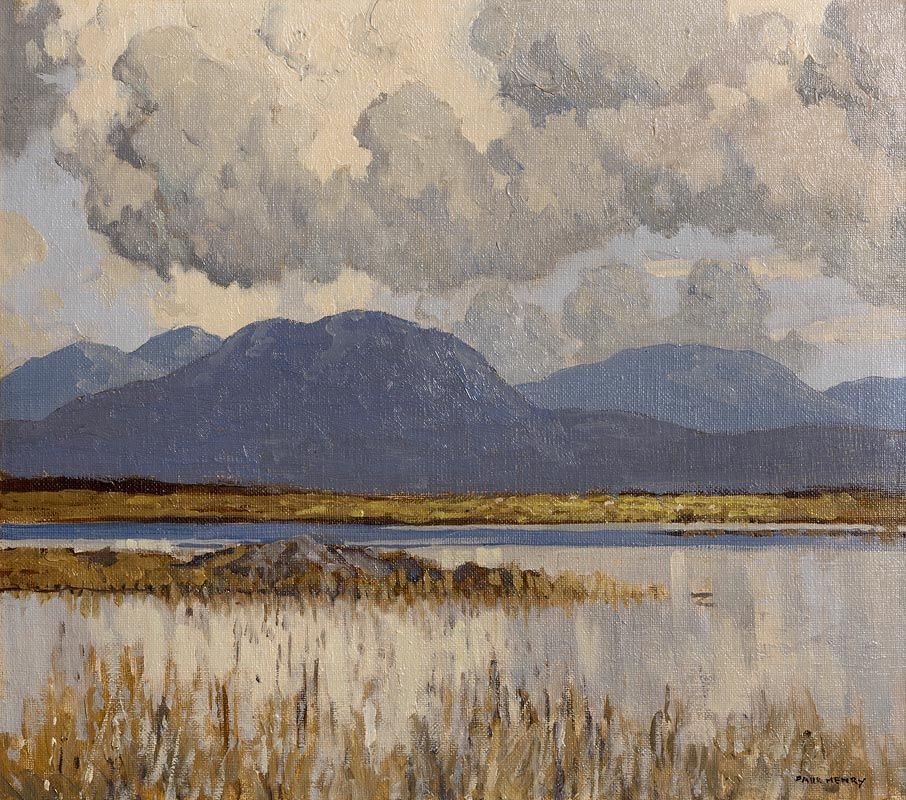

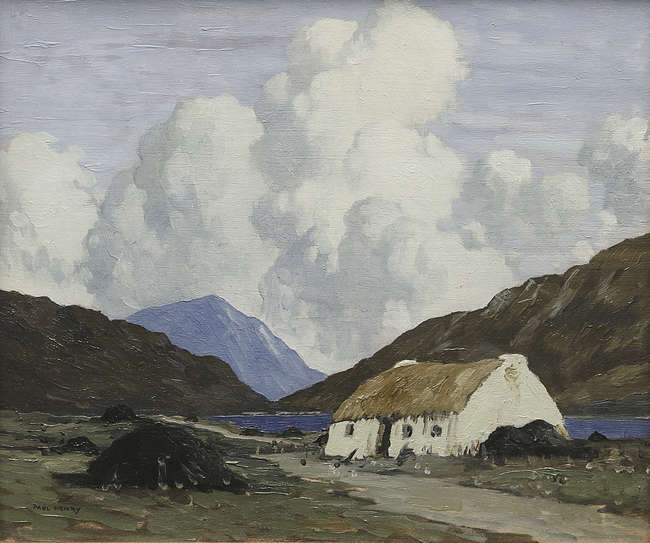


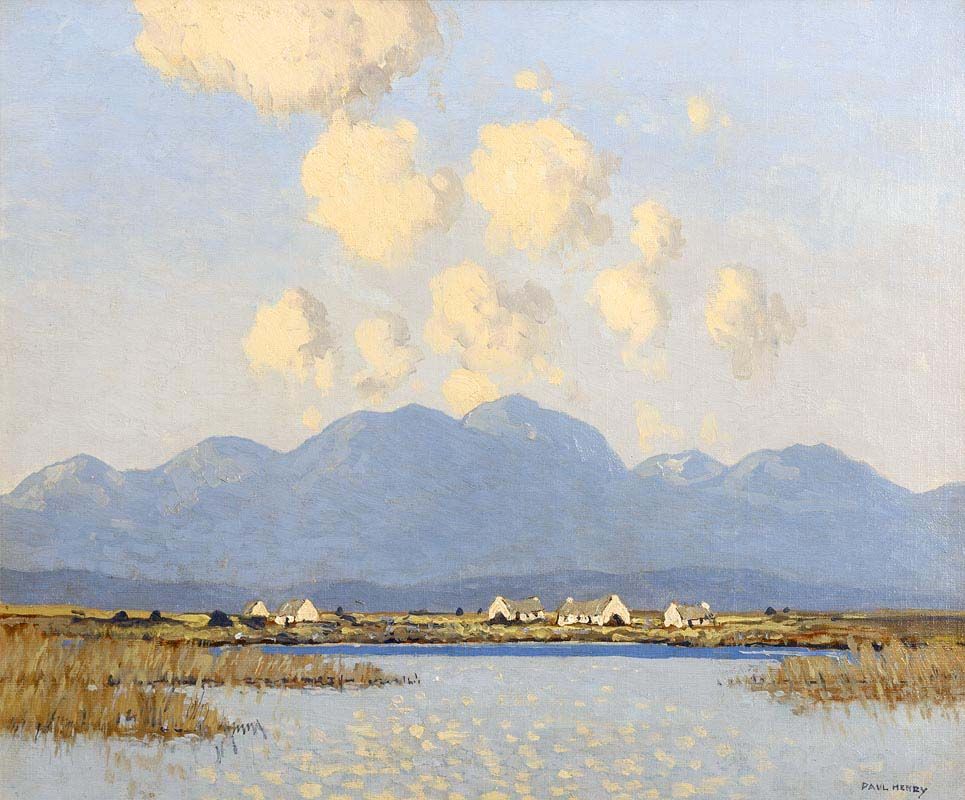

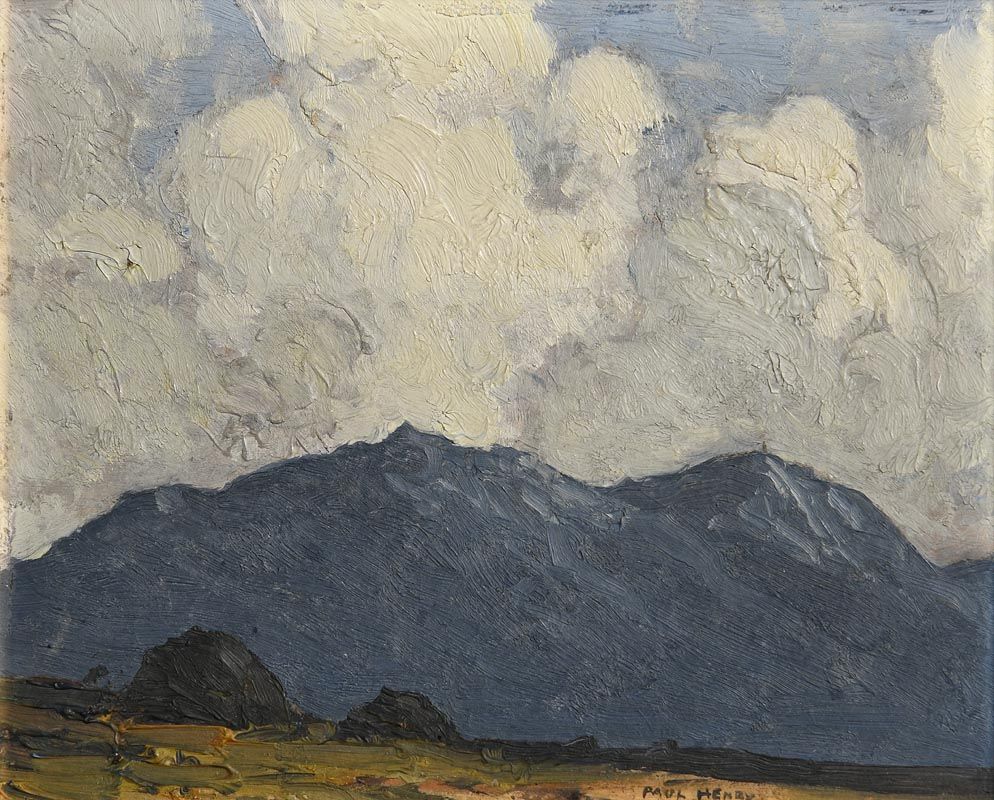
Try LotSearch and its premium features for 7 days - without any costs!
Be notified automatically about new items in upcoming auctions.
Create an alert